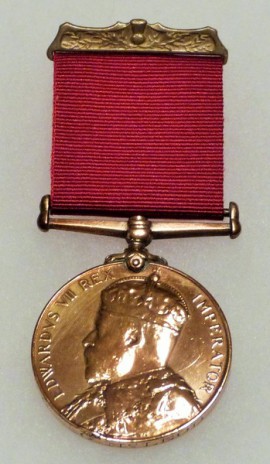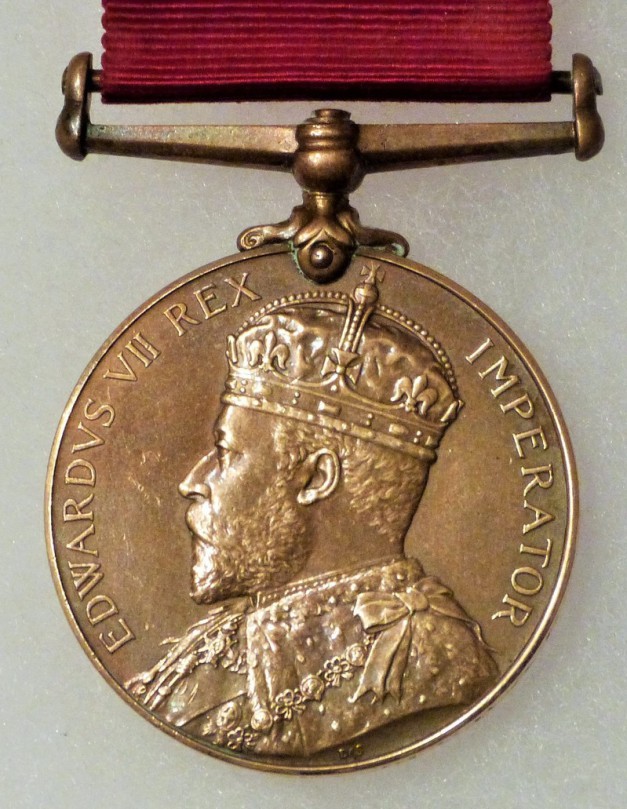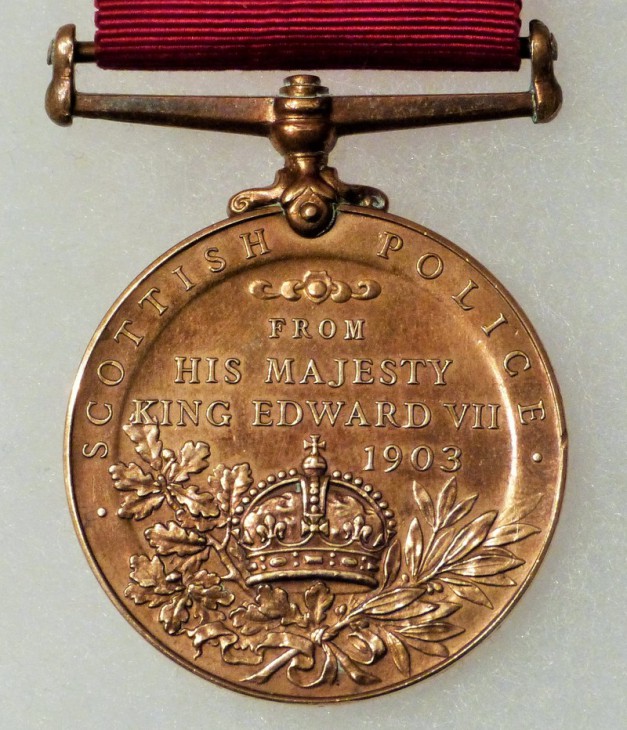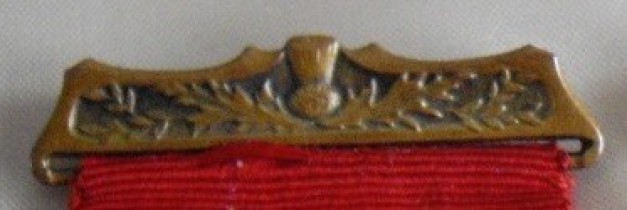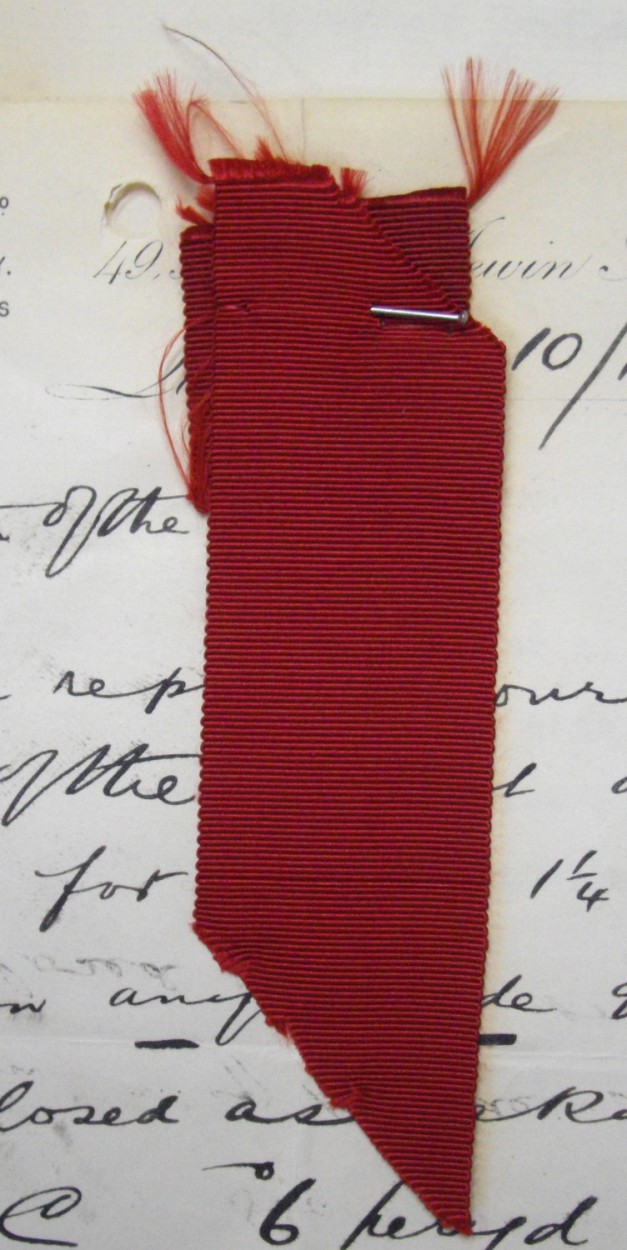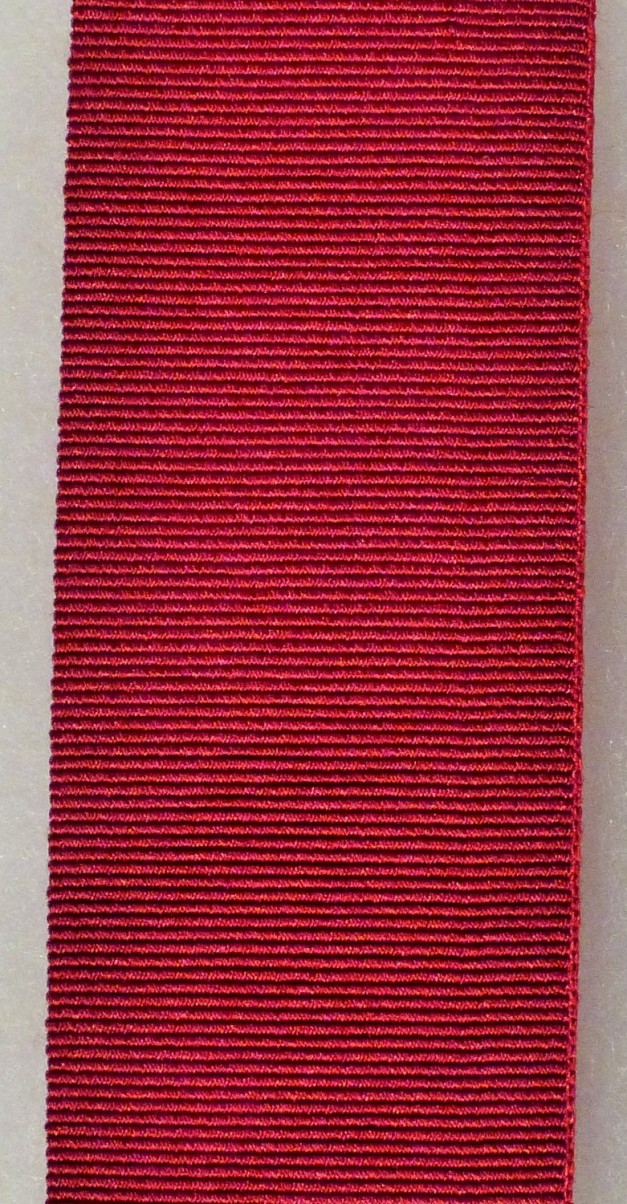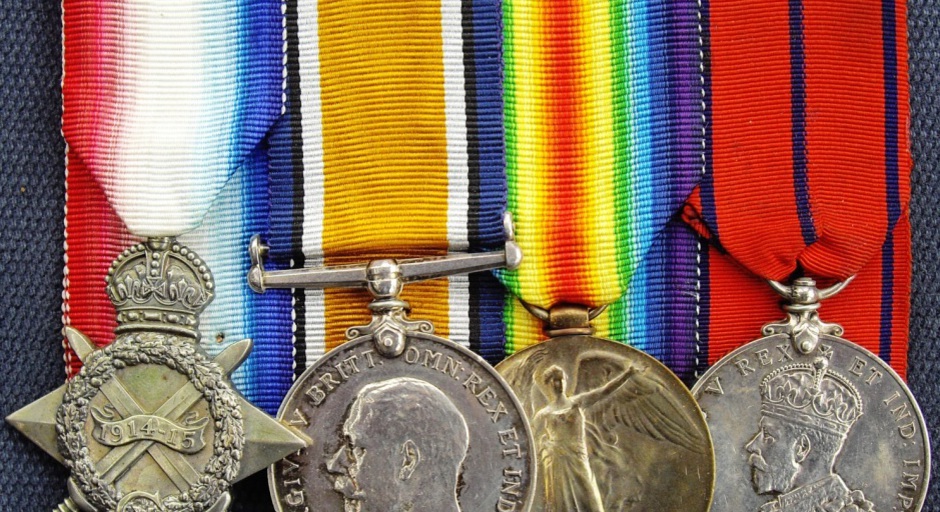
The King Edward VII Police (Scotland) Medal 1903 History
The King Edward VII Police (Scotland) Medal 1903 is more commonly known as "The Visit to Scotland Medal, 1903". However, if you look up the medal in the order of precedence, that is its official name.
The medal was initially intended to be awarded to those Police Officers who were on duty for King Edward VII's Visit to Edinburgh and Glasgow in May 1903.
It is difficult to imagine now but thousands of enthusiastic crowds came out to see Their Majesties in Edinburgh, Glasgow and Midlothian.
Mutual Aid was a well-known concept due to the need for forces to reinforce each other during industrial disputes and this occasion was no different. Forces from all over central Scotland came to Edinburgh and Glasgow in support of those forces.
Each of those officers on 'Aid' was entitled to the 1903 medal and that is what makes collecting and identifying the recipients so rewarding.
My long-term aim is to compile a medal roll for this medal and hopefully any collectors looking at the site will assist by enabling me to record the existence of any 1903 medals they have.
The sections below are quotations from correspondence concerning the planning for the medal between the Scottish Office, the Royal Mint and the Royal Household. There are far more documents than it is possible to use on a site like this but they are all available at The National Archives at Kew, London.
How The Design of the Medal Was Decided
Early proposals on Scottish Office headed note paper dated 5 September 1903 suggest that:
|
"the design of the Metropolitan Police Coronation Medal to be adopted for the Commemorative Medal to be issued to the Scottish Police in connection with the King's Visit to Scotland.
From 2500 to 3000 will probably be required".
|
This meant that the front of the medal is identical to the Coronation Medal, 1902.
It was also proposed that in addition to the inscription that reads on the rear,
|
"From His Majesty King Edward VII"
|
that there should be the words:
|
"City of Edinburgh Police" or "City of Glasgow Police".
|
It was only after much correspondence and the realisation that costs would be doubled that the proposal was abandoned and the following wording adopted in every case, i.e. for Police, Fire Brigade, St Andrew's Ambulance Association and the Army.
|
"Scottish Police" "From His Majesty King Edward VII, 1903"
|
The Intended Original Design
In a letter from J.H. Gascoigne of the Scottish Office, Whitehall, S.W. dated 7 September 1903 wrote to Mr W. Rigg of The Royal Mint:
|
"Dear W. Rigg,
Lord Balfour having decided that the design of the Metropolitan Police Medals of last year must be adopted for our Scottish Police Medals with an alteration of the legend on the reverse to suit the case, Mr McLeod desires me to write and ask if you can kindly arrange to supply a rough sketch of the medal as it will appear with the altered lettering, in order that the proposal may be submitted for His Majesty's approval.
The words proposed for the reverse are
From His Majesty King Edward VII 1903
Edinburgh (Glasgow)
On the raised margin surrounding the inscription
City of Edinburgh Police (City of Glasgow Police)
Yours sincerely
J. H. Gascoigne"
|
The numbers decided, 3,000, and the Police Forces involved
In a letter dated 8 September, 1903, from the Master of the Royal Mint to the Under Secretary of State for Scotland, he confirms:
|
"...that until the approved inscription has been received in this Department, all that can be done is to prepare the blanks for striking.
I have arranged that three thousand of these shall, in order to obviate as far as possible, any delay, be at once put in hand".
|
The Decision Process involved agreement between The Royal Household, The Scottish Office and The Royal Mint
In a letter from Lord Balfour of Burleigh marked 'Balmoral Castle' dated 17 September 1903, he states:
|
Mr Gascoigne,
The King approves of the medal.
His Majesty also approves of the idea of putting "Scottish Police" where "City of Edinburgh Police" now is and of, if possible, stamping the name of the force where "Edinburgh" now is.
The name of the recipient is to go on the rim.
(Intld:) B. of B. 17 .9.03"
|
This was received by The Royal Mint with some dismay.
The Practical Difficulties With the Original Design Emerge
It was becoming clear that the practical difficulties of "putting the Royal Commands" into reality were becoming insurmountable and this is shown in a letter from J.H. Gascoigne to The Royal Mint dated 21 September 1903.
|
"Mr Dodds, our assistant Under Secretary, asks me to send you enclosed copy of a Memorandum by Lord Balfour about the Medals, and to suggest that the authorities of the Mint might consider it and favour us with their observations as to the best way of giving effect to the Royal Commands.
The object of substituting "Scottish Police" for varying inscriptions such as City of Edinburgh Police, City of Glasgow Police, Midlothian Constabulary, Burgh of Leith Police was apparently to have one formula which would sufficiently indicate the nature of the service the locality (underlined) of service being indicated by the word "Edinburgh" or "Glasgow" as the case might be.
You will appreciate the difficulty if you will look at the enclosed list of separate police forces from whom the men on duty in the County and City of Edinburgh were drawn.
As I am going on leave today will you kindly address your reply to Mr Dodds.
Yours very truly,
J.H. Gascoigne"
|
The List of Police Officers Required for the County & City of Edinburgh
Correspondence dated 1903 from the Scottish Office, details the detachments of police required for the Royal Engagements in the City and County of Edinburgh.
|
In the County, the whole of Midlothian Constabulary were required along with detachments from the police forces of West Lothian, East Lothian, Peebles, Berwickshire, Roxburghshire and Renfrewshire.
|
|
The whole of the Edinburgh City Police were required for engagements in the City along with detachments from City of Glasgow, the Burgh of Leith and "two Detectives from each of the following, London, Liverpool, Manchester, Newcastle on Tyne and Leeds City Police forces".
|
The note continues:
|
"Similarly for Glasgow but the lists not to hand yet".
|
The Objections of the Royal Mint to the Original Design
A letter on behalf of the Master of the Royal Mint dated 24 September 1903 states:
|
"Sir,
With reference to Mr. Dodds letter of the 23d instant, I am directed by the Master of the Mint to inform you that it would not be possible to carry out the suggestion in the first paragraph of his letter, viz. that a word expressing the locality of the particular force (i.e. "Edinburgh", "Glasgow" & C.) should be placed where the single word "Edinburgh" stands in the specimen medal submitted by this Department, i.e. on the "Table" of the Reverse - on account of the number of letters contained in several of the words expressing the local forces to which the medals are to be issued. As this suggestion is only made in Lord Balfour's minute dated 17th instant subject to the possibility of its execution, the Master of the MInt hopes that it may be abandoned.
With regard to the alternative lettering suggested in the second paragraph of Mr Dodds' letter, I am desired to point out that it would double the cost of engraving, and prolong considerably the execution of the order. For these reasons the Master of the Mint does not recommend its adoption. In order to assist the Secretary of State, the Master of the Mint is preparing two further specimen medals with different letterings, which it is hoped will be delivered at the Scottish Office on Monday next.
I am, Sir, Your obedient Servant,
(Signed)"
|
The Decision is Made for a Simple Design
In a letter from James M. Dodds, Under Secretary of State at the Scottish Office, Whitehall, S.W. dated 28 September 1903, he writes to the Deputy Master & Comptroller of the Royal Mint as follows:
|
"Sir,
With reference to your letter of the 24th instant, I am directed by the Secretary for Scotland to state that as you are of the opinion that there is not room on the "Table" of the reverse of the Scottish Police Medal for the insertion of the name of the police force and that its insertion on the rim would be expensive and would delay the execution of the order, His Lordship considers the best course will be to abandon the proposal to show the name of the force on the medal.
The marginal inscription on the reverse will therefore in every case be simply "Scottish Police" and the inscription on the "table" will be simply "From His Majesty King Edward VII, 1903"
I am, Sir, Your obedient Servant,
(Signed) James M. Dodds"
|
The Suspension Brooch Correspondence
This is discussed in a letter from the Scottish Office signed by Reginald Macleod dated 8 October 1903.
|
"Sir,
In returning herewith the Irish medal left at this office on the occasion of your call on the 6th instant I am directed by the Secretary for Scotland to inform you that he approves the proposal that the Scottish Police medal be furnished with a bar brooch similar to that attached to the Irish medal but substituting thistles for shamrocks.
His Lordship would desire the ribbon of the medal to be red in colour, so as to show well against a blue uniform.
I am, Sir, Your obedient Servant,
(Signed) Reginald Macleod"
|
The pattern of the thistle brooch was approved in correspondence signed by Reginald Macleod dated 21 October 1903.
The Presentation of the Medals in 1904
The actual numbers of medals awarded to Police Officers:
Taken from articles in The Police Review and Parade Gossip (PR & PG) newspaper during 1904.
|
Police Force Strength in 1900 (Taken from Table in Page 333 Police Review & Parade Gossip, 13 July 1900)
|
Total Medals Presented |
Date |
Remarks |
|
Edinburgh City Police (537) |
300 |
1 March 1904 |
PR & PG, 4 March 1904, Page 118 |
|
Dr Sir Henry Littlejohn |
1 |
1 March 1904 |
PR & PG, 4 March 1904, Page 118. To see an account of Sir Henry Littlejohn's life, please click here.
|
|
Dr Harvey Littlejohn |
1 |
1 March 1904 |
PR & PG, 4 March 1904, Page 118. To see an account of Dr Harvey Littlejohn's life, please click here.
|
|
Dr Claude Buchanan Ker |
1 |
1 March 1904 |
PR & PG, 4 March 1904, Page 118. To see an account of Dr Claude Buchanan Ker's life, please click here.
|
|
Dr Edmund Price |
1 |
1 March 1904 |
PR & PG, 4 March 1904, Page 118. To see an account of the life of Dr Edmund Price, please click here.
|
|
Dr Alexander Gordon Price |
1 |
1 March 1904 |
PR & PG, 4 March 1904, Page 118. To see an account of the life of Dr Alexander Gordon Price, please click here.
|
|
Dr Charles Kennedy |
1 |
1 March 1904 |
PR & PG, 4 March 1904, Page 118. To see an account of the life of Dr Charles Kennedy, please click here.
|
|
Metropolitan Police (London) (15,508) |
2 |
|
PR & PG, 4 March 1904, Page 118 Two Detective Officers, (one of whom was Detective Sergeant David Liddle), performing Special Duty in Edinburgh in connection with the King’s Visit. The medals were forwarded to their respective Chief Constables for presentation.
|
|
Manchester City Police |
2 |
|
PR & PG, 4 March 1904, Page 118, Two Detective Officers performing Special Duty in Edinburgh in connection with the King’s Visit. The medals were forwarded to their respective Chief Constables for presentation.
|
|
Liverpool City Police |
2 |
|
PR & PG, 4 March 1904, Page 118. Two Detective Officers performing Special Duty in Edinburgh in connection with the King’s Visit. The medals were forwarded to their respective Chief Constables for presentation.
|
|
Leeds City Police |
2 |
|
PR & PG, 4 March 1904, Page 118. Two Detective Officers, one of whom was Detective Sergeant Thomas Hignett, performing Special Duty in Edinburgh in connection with the King’s Visit. The medals were forwarded to their respective Chief Constables for presentation.
|
|
Newcastle upon Tyne City Police |
2 |
|
PR & PG, 4 March 1904, Page 118. Two Detective Officers, one of whom was Detective Sergeant Henry Winterburn, performing Special Duty in Edinburgh in connection with the King’s Visit. The medals were forwarded to their respective Chief Constables for presentation.
|
|
Edinburgh City Police (537) |
300 |
4 March 1904 |
PR & PG 4 March 1904, Page 118 |
|
Leith Burgh Police (86) |
70 |
4 March 1904 |
PR & PG 4 March 1904, Page 118 |
|
Midlothian Constabulary (84) |
71 (Including CC Borthwick & Superintendent Wright) |
14 March 1904 |
PR & PG 25 March 1904, Page 153: 71 According to the Edinburgh Evening News, page 3 of Monday, 14 March, 1904.
|
|
Berwickshire Constabulary (28) |
17 (Including DCC Donald) |
14 March, 1904 |
PR & PG 25 March 1904, Page 153: 17 according to the Edinburgh Evening News, page 3 of 14 March, 1904.
|
|
Roxburghshire Constabulary (40) |
12 (Including Inspector Dickson) |
14 March, 1904 |
PR & PG 25 March 1904, Page 153: 12 according to the Edinburgh Evening News, page 3 of 14 March, 1904.
|
|
Renfrewshire Constabulary (98) |
3 (Including Sergeant McDonald) |
14 March, 1904 |
PR & PG 25 March 1904, Page 153: 3 according to the Edinburgh Evening News, page 3 of Monday 14 March, 1904.
The others were probably presented in Glasgow as part of the 410 on 8 April, 1904.
|
|
East Lothian Constabulary (38) |
28 (Including Superintendent Mann) |
14 March, 1904 |
PR & PG 25 March 1904, Page 153: 28 according to page 3 of the Edinburgh Evening News, Monday, 14 March, 1904.
|
|
Perthshire Constabulary (79) |
|
|
PR & PG 25 March 1904, Page 153. it is likely that the Perthshire medals were presented in Glasgow? - Please see below)
|
|
West Lothian Constabulary (49) |
38 (Estimated) |
14 March, 1904 |
PR & PG 25 March 1904, Page 153: According to page 3 of the Edinburgh Evening News, Monday, 14 March, 1904, an additional 38 medals were presented to officers present and West Lothian was the only other force present that day.
|
| Peebleshire Constabulary (14) | 7 (Including Superintendent Dickson) | 14 March, 1904 |
7 According to page 3 of the Edinburgh Evening News, Monday, 14 March, 1904.
|
|
City of Glasgow Police (1360) |
910 |
8 March 1904 |
PR & PG 15 April 1904, Page 117 PR &PG
|
|
Ayrshire Constabulary (154) |
64 |
17 May 1904 |
PR & PG 27 May 1904, Page 257 |
|
Stirlingshire Constabulary |
27 |
9 April 1904 |
The Falkirk Herald & Midland Counties Journal |
| Total Issued | 1863 (Confirmed) |
From the list above, it can be concluded that in May 1903, those police forces performing duty for the Royal Visit to the County of Edinburgh were:
|
Police Forces Performing Duty for the Royal Visit May 1903 in the County of Edinburgh |
|
Midlothian Constabulary |
|
West Lothian Constabulary |
|
East Lothian Constabulary |
|
Peeblesshire Constabulary |
|
Berwickshire Constabulary |
|
Roxburghshire Constabulary |
|
Renfrewshire Constabulary |
|
Perthshire Constabulary? |
Those police forces confirmed as performing duty in the City of Edinburgh were:
|
Police Forces Performing Duty for the Royal Visit May 1903 in the City of Edinburgh |
|
Edinburgh City Police |
|
City of Glasgow Police |
|
Burgh of Leith Police |
|
2 X Detectives from London, Liverpool, Manchester, Newcastle upon Tyne, and Leeds City Police Forces |
Whilst I have no documentation to prove it, Ayrshire Constabulary are not mentioned in any of the Edinburgh correspondence. I think it reasonable to infer that they were one of the police forces assisting City of Glasgow Police in performing duty for the Royal Visit to Glasgow as follows.
|
Police Forces Performing Duty for the Royal Visit May 1903 in the City of Glasgow |
|
City of Glasgow Police |
|
Ayrshire Constabulary |
| Govan Burgh Police |
| Partick Burgh Police |
| Renfrewshire Constabulary |
| Kinning Park Burgh Police |
| Lanarkshire Constabulary |
| Perthshire Constabulary |
| Stirlingshire Constabulary |
According to the 'Belfast Newsletter' of Saturday 9 April, 1904, "the Right Honourable A. Graham Murray, Secretary of State for Scotland, on the day before in George Square, Glasgow, presented 1315 police medals; 910 to the City Police and 405 to the County Police present".
Also present at the Royal Visit to Glasgow were officers from Govan, Partick, Kinning Park Lanarkshire and Renfrewshire and it is highly likely that the 410 medals issued to County forces include men from these forces.
The number of medals distributed to the Firemen, Soldiers and St Andrew's Ambulance Ambulance Association staff on duty in Edinburgh and Glasgow during the Royal Visit are still to be determined.
Thanks to George Barnsley of Lanarkshire Police History Society for the sending me the Falkirk Heralds of 1903 and 1904 with the information concerning Stirlingshire Constabulary.
The Original Medal Ribbon Manufactured by Messrs Dalton, Barton & Co., London
Replacement Ribbon Manufactured by A.C. Heath, London in 1912
The pattern of ribbon for the medal was approved on 4 December 1903 and was to be "plain red ribbon" manufactured by Messrs Dalton, Barton & Co of London.
The original sample can be seen in the archives of the Royal Mint held at The National Archives in Kew. Despite what many respected sources contend, the ribbon was never watered silk, it was never bright red or orange. It is plain darkish red silk ribbon with no watermarks whatsoever. It is 32 mm wide.
It would seem that no more than 3000 medals were ever struck but that the same "Scottish Police" medal was issued irrespective of whether it went to a Police Officer, a Fireman, a Soldier or a member of the St Andrew's Ambulance association.
The picture on the left is of a sample bought on 3 October 1912 by PS Peter Haig of East Lothian Constabulary (His medals can be seen under Scottish County Police Forces).
He bought the ribbon along with the sample of King George V Coronation (Police) Medal Ribbon from A.C Heath, Military Contractor, Manufacturer and Warehousemen, of 1-5 Barrack Road, Hounslow Heath, Middlesex. He paid £0.2/- per yard and £0.0.1d for the postage to the Burgh Police Office, Tranent in East Lothian.
The 1903 ribbon bought by PS Haig is identical to the original sample in The National Archives and to that on many of my medals.
The Original Pattern of Ribbon manufactured for The Royal Mint by Messrs Dalton, Barton & Co, London
Modern Replacement Ribbon Manufactured in 2012 and available from this website
You will often see Police (Scotland) 1903 medals sold with bright scarlet ribbons which are often wider than the suspension bar or, with a heavy watered silk effect. They are not accurate.
The correct width of the ribbon should be 32mm, no more, no less. It should be in plain dark red silk, if original.
In the past, I have bought from respected organisations, replacement ribbon that was bright orange. When I queried the colour I was assured that it was correct. That did not seem right to me since almost every medal that appears to have ‘original’ ribbon I have seen is the dark red fabric that collectors will be familiar with.
Having found the original sample in the Royal Mint records at the National Archives, that is sufficient evidence that the correct ribbon is as described above.
I have a small supply of authentic modern replacement ribbon manufactured by a well-known and reputable Military Tailor. Please email me on enquiries@scottishpolicemedals.co.uk with your ribbon needs.
To navigate around the site, please click on the links below.
To return to the Home Page, please click here.
To return to Scottish County Police Forces, please click here.
To return to Scottish City and Burgh Police Forces, please click here.
To return to Edinburgh City Police, please click here.
To return to City of Glasgow Police, please click here.
To return to the Edinburgh City Police Gallery, click here.
To return to the Forces that became Lothian and Borders Police Gallery, please click here.
To return to the 1911 medal, please click here.
